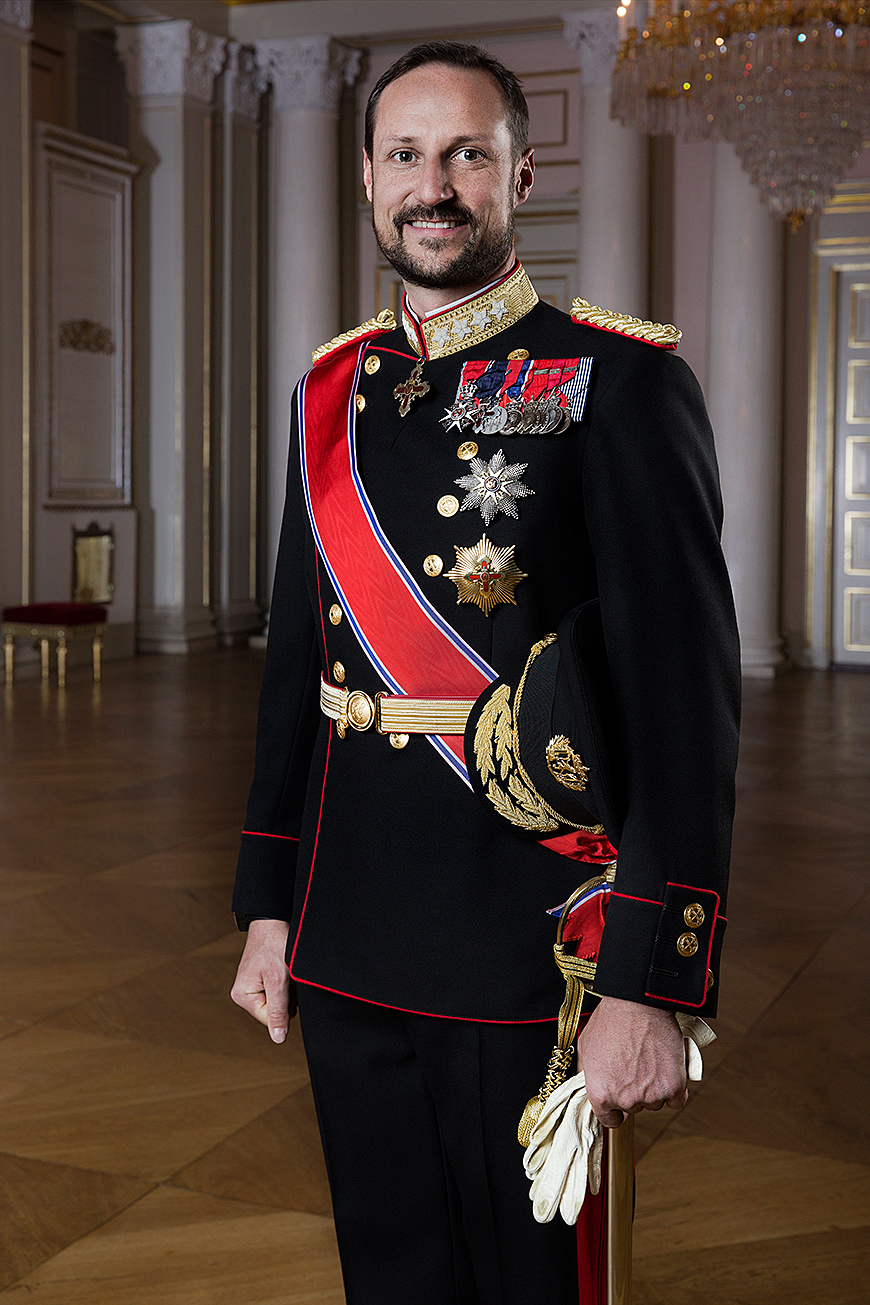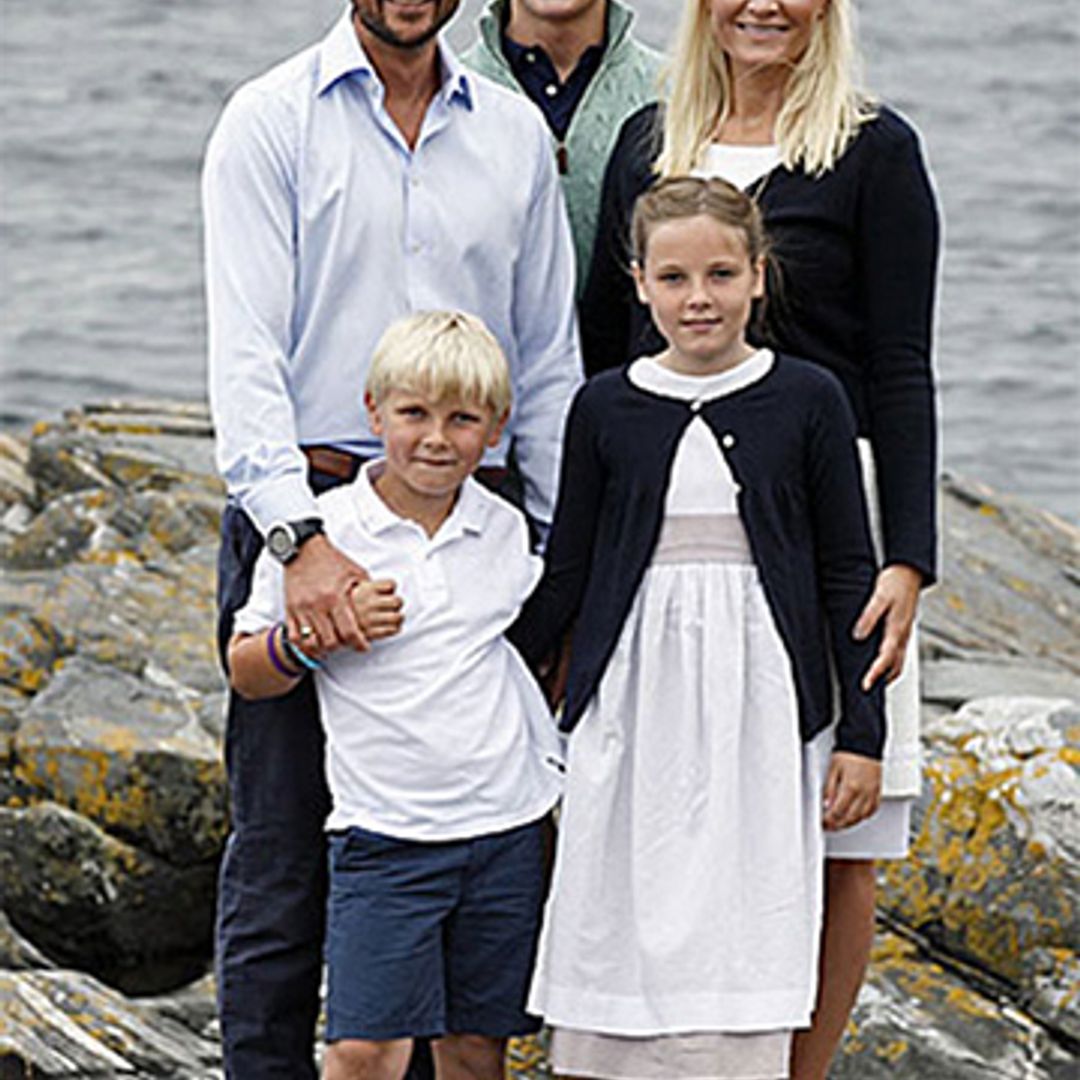Norway's Royals: Haakon, Succession & The Monarchy Explained!
Could the life of a royal, especially one poised to inherit a throne, truly be ordinary? The story of Crown Prince Haakon of Norway illustrates that even within the gilded confines of royalty, a life unfolds with both duty and the complexities of a modern world.
The Norwegian monarchy, with its roots firmly planted in the unification of Norway and the reign of Harald I of the Fairhair dynasty, offers a compelling narrative of continuity and adaptation. The introduction of the Norwegian Law of Succession in 1163 solidified the framework, establishing a single monarch and royal family through hereditary rule. This historical context sets the stage for understanding the role of Crown Prince Haakon and the responsibilities that come with his position as heir apparent to the Norwegian throne. Haakon's life is a tapestry woven with threads of tradition, service, and the evolution of the modern monarchy.
| Attribute | Details |
|---|---|
| Full Name | Haakon Magnus, Crown Prince of Norway |
| Born | July 20, 1973, Oslo, Norway |
| Parents | King Harald V and Queen Sonja |
| Siblings | Princess Mrtha Louise |
| Spouse | Crown Princess Mette-Marit |
| Children | Princess Ingrid Alexandra, Prince Sverre Magnus, Marius Borg Hiby (stepson) |
| Education | Attended various schools including Janslkka Elementary School, Oslo Montessori School, and received a Bachelor of Arts degree in Political Science from the University of California, Berkeley |
| Military Service | Royal Norwegian Navy Officer |
| Current Role | Crown Prince of Norway, Heir Apparent to the Throne |
| Official Duties | Carries out numerous official duties in Norway and abroad, including representing the King, attending state events, and supporting various causes. Served as Regent on several occasions. |
| Interests and Activities | Active in environmental issues, innovation, and youth initiatives. He is a UN Goodwill Ambassador. |
| Links | Royal House of Norway Official Website |
The Crown Prince's official duties are wide-ranging, encompassing both national and international engagements. Each year, he and his wife undertake numerous responsibilities, representing the Norwegian monarchy both within Norway and during visits abroad. Haakon's willingness to step up and act as Regent for the first time at the age of 18, during one of his father's foreign visits, speaks volumes about his early preparation for the role he would eventually assume. He is currently third in line to the throne, following his father, King Harald V, and his elder sister, Princess Ingrid Alexandra.
- Jake From State Farm Actor A Comprehensive Profile
- Exploring The Life And Achievements Of Alexander James Egan
The Norwegian royal family is committed to public service. King Harald V and his family have consistently demonstrated a remarkable ability to balance their royal duties with a genuine connection to the people. The Royal Court's annual report, released in 2024, shows the extensive reach of the royal family's engagement. Members of the Royal House of Norway made visits to 42 municipalities across Norway, including county visits to Agder, Rogaland, and Trndelag. This commitment to engaging with the Norwegian people reinforces the monarchy's relevance and underscores its dedication to representing the nation.
Crown Prince Haakons life has been punctuated by significant milestones. His birth on July 20, 1973, marked a pivotal moment, as he became heir to the throne of Norway. The family dynamic is an integral part of his life: He, his wife, and their three children form the core of the next generation of the Norwegian royal family. The Prince also plays a crucial role in Norways public life. The photo taken on the occasion of his 18th birthday illustrates the intimate bonds within the family, which have always been open and honest about each other.
The line of succession in Norway is governed by Article 6 of the Constitution, which was last altered in 1990 to introduce absolute primogeniture among the grandchildren and descendants of King Harald V. This amendment ensured that the eldest child, regardless of gender, would inherit the throne, reflecting a commitment to gender equality. This succession order is a matter of historical significance and has played a crucial role in ensuring stability of the monarchy.
- Understanding Philippine Leroybeaulieus English Accent A Deep Dive
- Charlotte Ritchie The Rising Star In Television And Film
While the formal duties and succession are significant, the Royal Family is also associated with moments of human interest, such as the public appearances that often capture the public imagination. The family is involved in various aspects of Norwegian society. For instance, in 2024, members of the Royal House of Norway paid visits to 42 municipalities, including extensive county visits to regions like Agder, Rogaland, and Trndelag. They also engage in a wide array of activities, from attending cultural events to participating in international forums. These actions demonstrate the Royal House's dedication to maintaining close ties with the people, staying relevant, and contributing to the country's well-being.
The history of the Norwegian monarchy is rich and complex, dating back to the unification of Norway and the reign of Harald I of the Fairhair dynasty. Though Norway has officially been a hereditary kingdom, there have been instances of elective succession throughout history. In 1905, the people of Norway confirmed the accession of Haakon VII to the position of King through a plebiscite, demonstrating the importance of popular consent in the monarchy's legitimacy. Crown Prince Haakon's life and the lives of his family members are also regularly subjects of media attention, and it has seen its share of controversies and scandals. For instance, Crown Prince Haakon has addressed the arrest of his stepson, Marius Borg Hiby. These situations are often handled with a commitment to transparency.
The royal family's life often intersects with significant historical and social events. King Olav V, born Prince Alexander of Denmark, was the son of Prince Carl of Denmark, who was elected King of Norway in 1905, assuming the name Haakon VII. In 1929, Crown Prince Olav married Princess Mrtha of Sweden. This union underscored the importance of international relationships and highlighted the interwoven histories of European monarchies. Princess Mrtha never became Queen of Norway, as her husband, Olav V, only became King in 1957.
Queen Sonja's life has been significant. Born Sonja Haraldsen on July 4, 1937, she married the then-Crown Prince Harald on August 29, 1968. Their union initially faced some controversy, with Harald's father, King Olav, expressing reservations. The marriage ultimately strengthened the Norwegian monarchy. They have two children: Princess Mrtha Louise, born in 1971, and Crown Prince Haakon, born in 1973. They also have five grandchildren. This family story reflects the human side of the royal family, as well as the strength in family traditions.
The education of the younger generation also receives attention. Prince Sverre Magnus, for example, began kindergarten in Asker in autumn 2007 and later attended Janslkka Elementary School from August 18, 2011. From 2014 to 2020, he attended Oslo Montessori School. His educational journey illustrates the diverse learning experiences available to the younger members of the royal family, helping to prepare them for their future roles.
The Crown Princes involvement extends to a wide array of official and international duties, particularly those related to youth, innovation, and climate change. This focus underlines the monarchy's commitment to addressing some of the most pressing issues of our time. He is a naval officer, a philanthropist, and a UN Goodwill Ambassador, demonstrating his dedication to various causes beyond his role as heir to the throne. He is, in many ways, representative of a modern royal.
The social roles of the Royal House are also significant. They have played key roles in establishing and maintaining a close relationship between the monarchy and the people. This is especially important when they carry out duties in regions like Agder, Rogaland, and Trndelag. Through regular visits and engagements, they stay connected with local communities, learn about their concerns, and represent the nation on a local and global scale.
The role of the Crown Prince and his family in the modern world is significant. They balance royal duty with personal authenticity, promoting unity and stability. Crown Prince Haakons life embodies the essence of the Norwegian monarchy: a history rooted in tradition, an embrace of modern values, and a commitment to serving the people of Norway. His story, in many ways, reflects the best of the monarchys evolution.

Crown Prince Haakon Biography & Facts Britannica

Kronprins Haakon Det norske kongehus

Prince Haakon of Norway Latest News, Pictures & Videos HELLO!